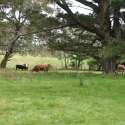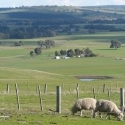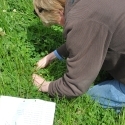17 Oct 2016
4 Timing of fertiliser application to pastures
Potassium for pastures
 Cattle on pastures
Cattle on pastures
Timing of potassium application can have an effect on total annual pasture production. In New Zealand, trials have shown that, in high rainfall environments (>1500mm) and on peat and sedimentary soils, spring applications are superior to autumn applications, with most of the difference occurring in spring. On ash and pumice soils with rainfall < 1500mm timing of application has little influence on total annual pasture production.
In Southern Australia autumn application is traditional except on deep sandy soils where leaching losses may occur. Experimental evidence of benefits from different application times has been inconsistent, and often there is no difference in total annual pasture production. Autumn applications are able to increase pasture growth in autumn and winter when there is usually a feed shortage, and application to dry firm land helps avoid fertiliser burn and bogging.
Splitting applications rarely improves annual pasture production compared to a single application, but can change seasonal production. For example in a Victorian trial, application of potassium in autumn was compared to the same rate of application split between spring and autumn. Total annual pasture production was the same, but where applications were split the autumn and winter yields were decreased and spring yield increased. Split applications are recommended where high annual rates of potassium are used (>100kg potassium/ha), in high rainfall areas (>1500mm) or where soils are prone to leaching.




